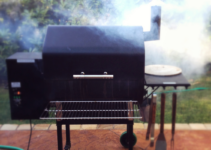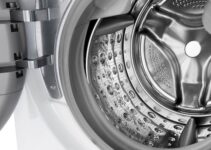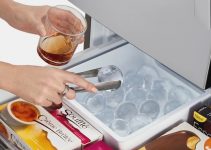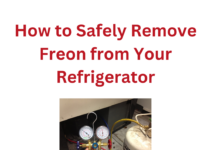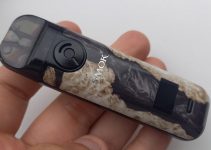These household appliances are now more sophisticated, with control boards to pretty much handle any liquid-related task. Widely used refrigerator brands like LG have got products with extra features for ice making and even water dispensing.
However, we often need some troubleshooting with these new features, especially if they’re getting older in the home. This article will highlight the common causes of an LG ice maker not filling with water and how to fix them yourself using household tools.
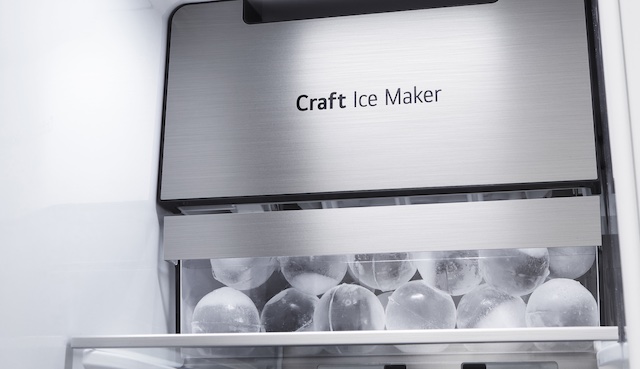
LG Ice Maker Not Filling with Water: Common Causes
- Faulty water inlet valve
- Filter clogging
- Low water pressure
- Dispenser lock
- Faulty dispenser switch
- Bent or kinked water hose
- Defective control board
- Defective ice maker
- Faulty door switch
- Faulty Optical sensor
LG Ice Maker Not Filling with Water: DIY Fixes
Generally, you should consult the vendor or LG manufacturer if it’s a new faulty product, especially if you’ve got a warranty you wouldn’t want to violate. However, if there is no warranty, you can try out these simple DIY fixes to sort out an ice maker not filling with water.
Faulty Water Inlet Valve
The water inlet valve is the first thing to check out; it supplies the ice maker with water. Of course, when it becomes faulty, it won’t perform as you’d normally expect. For optimum performance, the supply pressure should be at least P4 psi. If you test and find the supply short, then the water inlet valve may cause your problem.
While that may be true, you may also observe a lower psi if the LG refrigerator is set on the reverse osmosis system. LG manufacturers always make users understand that using the reverse osmosis system at the inlet pipe can slow down the water flow.
Filter Clogging
The most common cause of a faulty ice maker is clogging from the filters. The LG manufacturer guidelines recommend that the ice maker filter be changed at least every six months because of the likelihood of blockage.
Aside from an aged filter, incorrect filter installation can also result in the ice maker not filling with water. In this case, refer to the manufacturer’s guidelines for the correct installation procedure. Also, an incorrect installation can result from using the wrong type of filter, so make sure you’re installing an OEM filter.
Low Water Pressure
The ideal water pressure for an LG ice maker is between 40 and 120 PSI (3 to 8 bars). A lower water supply pressure may cause the problem of ‘the ice maker not filling with water because water may not get to the ice maker. Check the water pressure in your home to make sure it meets the minimum requirements for the ice maker.
Dispenser Lock
You can quickly spot this problem if you check the display panel lock icon of the refrigerator. The icon on the display panel lets you know which functions are locked or otherwise. If you notice that all the ice maker’s functions are locked, you need to press and hold the lock button to unlock it. You’ll know you’ve got it right if the lock isn’t highlighted on the display panel.
Faulty Dispenser Switch
The dispenser control switch lets you activate the water inlet valve; if it becomes faulty, water may not flow to the inlet valve because there’s no control to open up the valve. To correct this, you need to confirm the problem with a multi-meter. If you notice a discontinuity in the voltage supply, you’ve got a faulty dispenser switch and should proceed with the replacement.
Bent or Kinked Water Hose
Sometimes the problem of an ice maker not filling with water may result from a kinked or bent hose. The water hose is positioned behind the fridge, supplying the inlet valve. A bent or kinked water hose can also affect the water pressure, so check that. Try to straighten the hose, and if you notice any puncture or damage, you can proceed with the replacement.
Defective Control Board
This should be one of your last resorts because it often doesn’t happen. The control board is often seen as the brain of the refrigerator, and if faulty can result in many problems, including a defective ice maker unit. While most of the issues are simple to fix, this is often difficult and will require the expertise of the vendor or manufacturer’s technician.
Defective Icemaker
Sometimes the problem of an ice maker not filling with water may come from the ice maker itself. A faulty ice maker will cause multiple problems, and the inability to collect water can be one of them. You want to make sure it’s functioning properly by checking the tray. If working properly, the tray will turn; if it doesn’t, there’s probably a problem with the motor. In this case, you’ll have to get a replacement.
Faulty Door Switch
The refrigerator door is configured to stop water flow when opened to avoid leakages automatically. While that’s the case, if you have a faulty door switch that registers as opened in the control board even when closed, your water inlet may not function properly.
To fix it, you need to verify that the problem is a door switch-related issue by checking its continuity with a multi-meter. If it fails the continuity test, you will need a replacement to get the water flow working again.
Faulty Optical Sensor
The refrigerator’s optical sensor can also cause a problem for the ice maker if it’s not working properly. To check if the problem is from the optical sensor, remove the ice bin from the compartment, then push the refrigerator and lock button simultaneously. A working sensor will read ETY on display; however, if it shows FULL, the sensor is probably faulty; you can proceed with a replacement.
Knowing the Issue through LG Refrigerator Error Codes
Improved LG refrigerator models these days will often self-diagnose to determine the fault source. If you’ve got a recent model, you’re most likely to see an error code displayed on the screen. You can either check your manual or use the LG support website to interpret.
